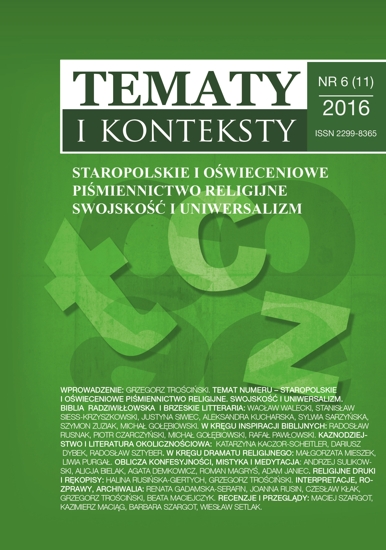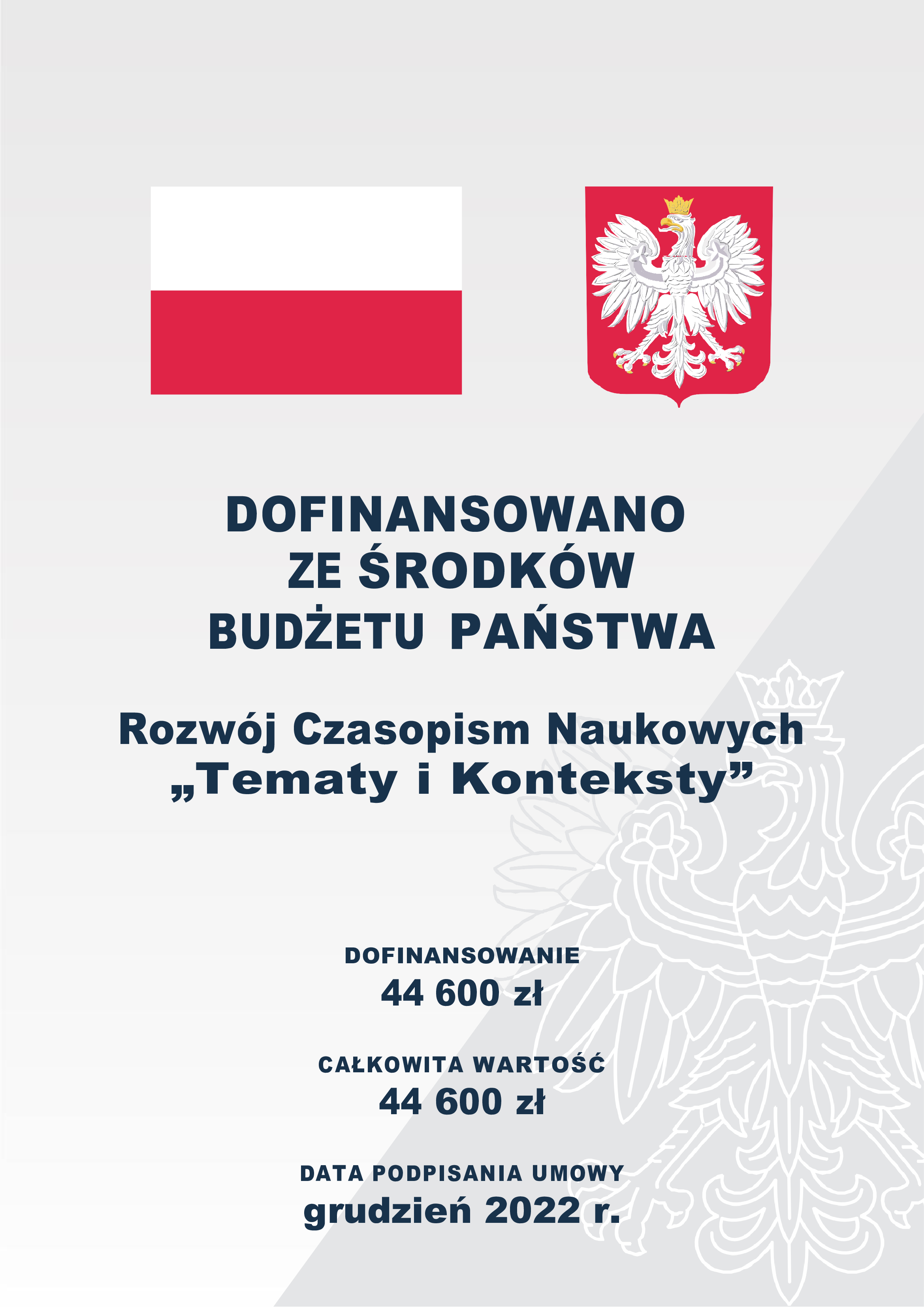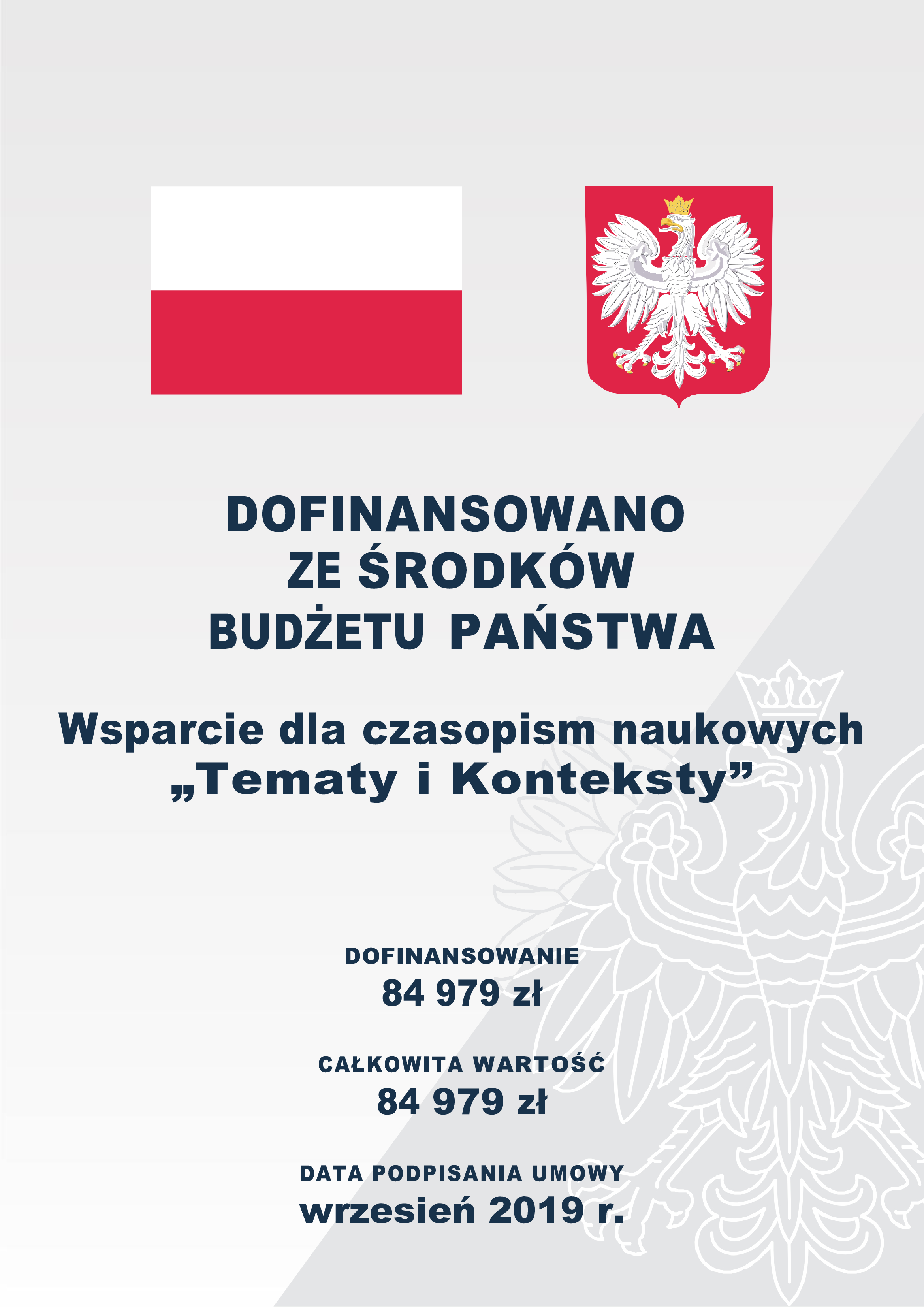Wymiar quasi-religijny polskich gazet ulotnych o batalii chocimskiej z 1621 r. i kilka przyczynków (przegląd wybranych zagadnień)
Słowa kluczowe:
literatura okolicznościowa i polskie gazety ulotne XVII w., bitwa chocimska z 1621 r., Marcin PaszkowskiAbstrakt
This article is an attempt to present the content of a few short brochures related to religious or rather quasi-religious elements which support the main messages of the leaflets. The range of the studied texts was defined in accordance with the notes made in Bibliography (Bibliografia) by Konrad Zawadzki who classified only four prints as early newspapers published in 1621 (in the national language). All of them in various ways concern the war between the Commowealth and the Ottoman Empire. In all of them their authors (mostly anonymous ones, excluding Marcin Paszkowski with his Sauromatian Flag [Chorągiew sauromatcka]) created an image of warfare waged within an imaginary field of combat – religion, therefore a reader does not only find here the struggling soldiers and knights but the followers of Catholic and Islamic faiths as well. And of course, each detail of these enunciations – in terms of religion – pointed out the winner: Poles for their fidelity to the Church. Such a conviction was apparently proved with a few peculiar foresights; e.g. differences between Christian and Muslim calendars – A.D. 1621 it was almost precisely a thousand years after the Muslim method of time reckoning began, which obviously should have meant the end of Turkish power, doomed then to a final collapse. There were more similar argumentations based on omens extracted from Christian tradition that have been confronted with Islam beliefs and they might have been showing – tendentiously – the real victors: Poles again. However only the facts (confirmed by the evidence from an eyewitness and participant of the battle) appeared the most important although their value was also shown with a Biblical scene – “the glad tidings” seemed to be like a dove returning to Noah’s ark (like Poland “floating” then – alone and without any help) with an obvious sign of the end of deluge… Predictions won for that time (fortunately) but their quality soon became – in the very near future – verified sorely (unfortunately). Other matters (contributions) were discussed, too – i.e. questions of the printing time of Sauromatian Flag and its borrowings, a background of an augury concentrating around the Equestrian Statue in the Augustaion in Constantinople and some other various details.
Downloads
Pobrania
Opublikowane
Jak cytować
Numer
Dział
Licencja
Prawa autorskie (c) 2016 Tematy i Konteksty

Utwór dostępny jest na licencji Creative Commons Uznanie autorstwa – Użycie niekomercyjne – Bez utworów zależnych 4.0 Międzynarodowe.




